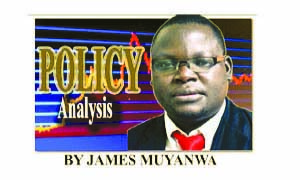TODAY, we consider the economic provisions of the 17th manifesto in tomorrow’s general elections.
As indicated in April this year and with the subsequent successful filing in of nominations by 16 presidential candidates for the election, I now consider the provisions for the 17th manifesto.
After looking at the provisions for a number of manifestos for some presidential candidates, I have carved this one to merely enhance debate and look at some of the issues which may have been left out in the campaign debate.
From the current annual inflation of 24.6 per cent, according to the Zambia Statistical Agency, I would target to reduce the rate to a single digit by 2026.
This means that, on average and on year-on-year basis, the prices of goods and services will increase by less than 10 per cent as compared to, say, last month when they did so by 24.6 per cent from the July 2020 figures.
For the much-talked about dear Kwacha’s rate against major convertible currencies the target is to reduce the foreign exchange rate against the United States (US) dollar to not more than K10, thereby reducing the cost of importing goods and services.
Another benchmark is the lending interest rate which is currently hovering above 30 per cent to below 20 per cent to reduce the cost of borrowing money.
That is in the hope that the money borrowed by the citizens would be invested to help grow the economy.
Talking about economic growth, my target is to achieve the real Gross Domestic Product (GDP) growth of 10 per cent over a five-year period.
In trying to attain that economic growth rate, there will be need to look at the expenditure on civil servants’ emoluments vis-à-vis debt servicing and financing of the social and economic sectors.
Currently, after paying debt and workers’ emoluments, the government remains with a paltry 10 per cent of the total budget to cater for the social and economic sectors of the country and that has to be addressed.
The easy and lazy way of tackling the issue would be through wage free for civil servants for a given number of years, within the term.
From most of the manifestos looked at, it is obvious that many candidates consider agriculture as the main thrust for economic growth in the country.
This, too, takes agriculture as a growth sector for the economy with major changes in running the sectors being proposed.
The changes include the refocus on the sector by emphasising on zoning the country into farming areas according to their climatic and soil conditions as well as other comparative advantages.
Like it has been stated on this forum before, it is not every province where the government should promote the cultivation of maize, for instance.
In some areas maize should not even be grown because they simply not suitable for that.
In short, therefore, the Farmers Input Support Programme (FISP), or whatever one decides to call the support rendered to the small scale farmers every year by the government, should be targeted accordingly and boosted with agriculture loans.
In some areas, the FISP should be in form of improved rice seed, for instance, in others it could be in form of maize input like it is now, while in others it could be for cultivation of relevant crops or indeed livestock rearing.
To ensure value addition to maize, the small scale grinding mill will become the main asset for the co-operative societies in maize belts, thereby helping to reduce the prices of mealie meal on the market.
Mentioning of cooperative societies, these also require revival to function properly and become the key value-addition drivers for more other crops and livestock products.
Another proposed change is the synchronisation of the FISP and the Food Reserve Agency (FRA) operations so that crop production and marketing could be handled by the agency.
Of course that would entail amending the constituting Act for the FRA and allow it to even offer farming loans.
This will enable farmers who may get loans from FRA to pay in kind, through their produce, and similarly FRA can pay farmers in kind, through inputs, for their delivered produce.
Apart from agriculture, other economic growth sectors would be tourism, targeting record more than 10 million tourist arrival per year, boosted by just one per cent of the 1.4 billion Chinese population.
Deliberately, the government would promote ‘exportation’ of skilled manpower, like for footballers, drivers, teachers and other professionals whose expertise could be in excess locally.
The government would facilitate for these by assisting them in getting visas and permits to work abroad and in turn they will pay ‘some taxes’ once they are settled in those foreign countries.
Locally, the job creation target is one million for the five-year term.
The main hub of the policies generally should be poverty eradication and when all is said and done a specific number of the poorest of the poor Zambians should be lifted from absolute poverty in given period.
Every year a progress report would be given to update the nation on the effort towards that realisation.
In summary, my five-year average macro-economic objectives are to:
• Achieve real GDP growth of 10 per cent;
• Create at least one million jobs;
• Attain single-digit inflation;
• Increase international reserves to over three months of import cover;
• Suspend borrowing for two years
• Increase domestic revenue collections to over 21 per cent of GDP; and
Since this article will come out a day before the general elections, I would like to wish all the 16 presidential candidates all the best and may the one with the best manifesto carry the day!
For comments: 0977 246099, 0955 431442 or e-mail: jmuyanwa@gmail.com







